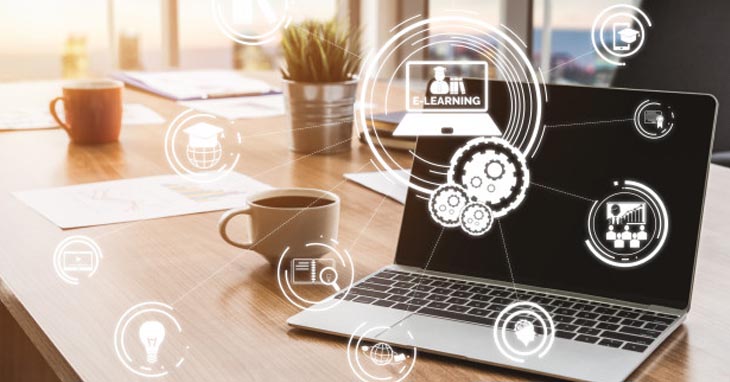As the world continues to battle the COVID-19 outbreak, more than 130 countries have closed their schools and universities by now. Roughly 80% of students worldwide have been impacted by the pandemic. This is an unprecedented time, never before has the world seen so many students out of learning institutions at the same time. To adapt, many learning centers have shifted their operations online. Online classrooms and lectures have become the norm, and while it is a good adaptation in difficult times, it is not without its challenges.
Both students and educators are facing a specific set of challenges when it comes to online education, and here we have tried to outline some strategies each group can employ to help deal with this crisis.
For Educators:
Digital Equity
The first thing to do is ensure that all students and teachers have access to the materials and resources needed to study and teach efficiently online. Not everyone may have access to a good internet connection and may not have access to a laptop when they need it. If you are able to send spare devices home with those who are in need, that would go a long way in ensuring everyone is able to benefit from the online resources and not lag behind. Schools and universities could also try to buy or rent hotspots and distribute it to those who don’t have internet connections. If none of these are feasible, at the very least, platforms that are being used online should be mobile optimized, so those who don’t have access to a laptop at home are able to still learn using their phone.
Select the Right Tools
There are many different tools, apps, and platforms available to aid with online education right now like Google Classroom, Microsoft Teams, One Note, Seesaw, Nearpod, etc. It is important to narrow down and select just what is essential and stick to it. Don’t confuse and overwhelm parents and students with multiple different tools that would be hard to keep track of. Plan it out, keep it simple and efficient. And most importantly, make sure that your teachers and faculty members are trained in using the tools you select.
Novel Teaching Methods
Use this time to explore different learning methods like parent-oriented learning, or encourage flipped classroom strategies and research-oriented study methods which call for students to practice critical thinking and self-study. This opportunity can be utilized for interactive and project-based assignments that will probably even come in handy and can be carried on when we return to our schools and universities physically.
Communication
It is absolutely crucial for communication to be extremely clear and also efficient. Have specific channels where you update information that the parents and students will need, use video platforms to distribute information like how to use certain tools and technology, send out updates regularly and make sure that the information is clear, concise and easy to understand.
For Students:
Communication

Communication works both ways and is just as important from the side of the students and parents. If you are facing any issues or problems with online learning, maybe don’t have access to internet or required devices, or are facing difficulties learning or understanding topics being covered, make sure you contact your school/university. Make your problems clear to the educators so they have the information they need to figure out the best way to help you.
Study space
Try to designate a specific study space. The space can move around if that’s what you prefer, but it’s important to clear out a space and make it optimal for concentration. It should feel like you are entering a study zone so you subconsciously get into a better headspace to focus and study. Keep the area neat and decluttered, keep the things you need around, like books and stationery, they shouldn’t be scattered all over the house.
Planning and time management
Devise an effective study plan, go online and communicate with your friends to see what planning strategies they are employing. If you have specific timings set out by your institution for when classes happen, make sure you have that timetable set out. Plan self-study and homework hours around it. Keep time aside for breaks. If you have pre-recorded lectures that you have to listen to, don’t keep postponing them just because they are pre-recorded and can be accessed anytime. It’s easy to fall into that pattern and never get around to it. Effective planning on your end is key to making sure your own objectives are met and that your education is not affected too drastically.
Socialize
The feel of going physically to a school/university and interacting with peers can be important for many, so make sure to try and keep up the socialization online. Get on video and conference calls with friends and/or study groups and stay connected with everyone. This is important so that you don’t fall into a rut and stay motivated and energized to study, and also so that you may be inspired by the strategies your peers are adopting to cope.
All in all, this is definitely an unprecedented time for education everywhere. Although there have been many instances of institutions resorting to e-learning in times of a crisis, such as during the SARS outbreak in 2003, the scale and magnitude of this pandemic have never been experienced before. As such, what we are witnessing is not merely a few cases of temporary online strategies but a shift in the way our education systems work. It’s important to keep the long term in mind and rethink the ways in which we function. We can use this opportunity to take a step back and become more efficient. Educators can apply this to teaching methods and students can apply this to the way they study and plan their workload and time. On that note, we wish everyone good luck in these difficult times. Stay productive and stay safe!

